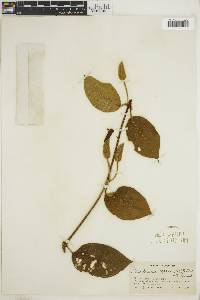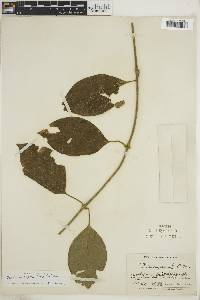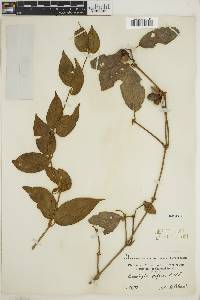
Neotropical Flora
|
Family: Acanthaceae
|
1. Mendoncia aspera (Ruiz & Pav.) Nees Mendozia aspera Ruiz & Pav. Syst. Veg. Peruv. Chil. 158. 1798. Type col- lected in wooded region near the village of Chinchao and the Masapata Estate, Peru, by Ruiz & Pavón. The specific name alludes to the rough- ened upper surface of the mature leaf blades. Mendoncia aspera Nees in DC. Prodr. 11: 51. 1847. Based on Mendozia aspera Ruiz & Pav. Stem appressed-pubescent; leaf blades elliptic, 5 to 12 cm. long, 3 to 6.5 cm. wide, acuminate at apex (usually tipped by a mucro 1 to 4 mm. long), rounded or narrowed at base, appressed-pubescent above, becom- ing scabrous with age, the hairs about 0.5 mm. long, each one arising from a stellate base, the lower surface rather densely and softly appressed-pubescent, the hairs yellowish, up to 1 mm. long; flowers 1 to 3 in each axil; pedicels 2 to 6 cm. long, appressed-pubescent; bracts oblong-lanceolate to ovate-lanceolate, 3 to 3.5 cm. long, 1.2 to 1.5 cm. wide, often subfalcate, acute at apex, tipped by a short mucro, rounded at base, densely and softly sericeous, the hairs yellowish brown, closely appressed or ascending; corolla bright red, 3.5 cm. long, the throat about 4 mm. broad; ovary puberulent; style glabrous; fruit deep pur- ple, 1.5 cm. long, 10 mm. broad, somewhat compressed, sparingly puberulous. Woods and thickets, usually below 400 meters. Colombia, Peru, Bra- zil, and Surinam. PUTUMAYO: Umbria, Klug 1760 (GH, Mo, NY, US). |
Powered by Symbiota.

































